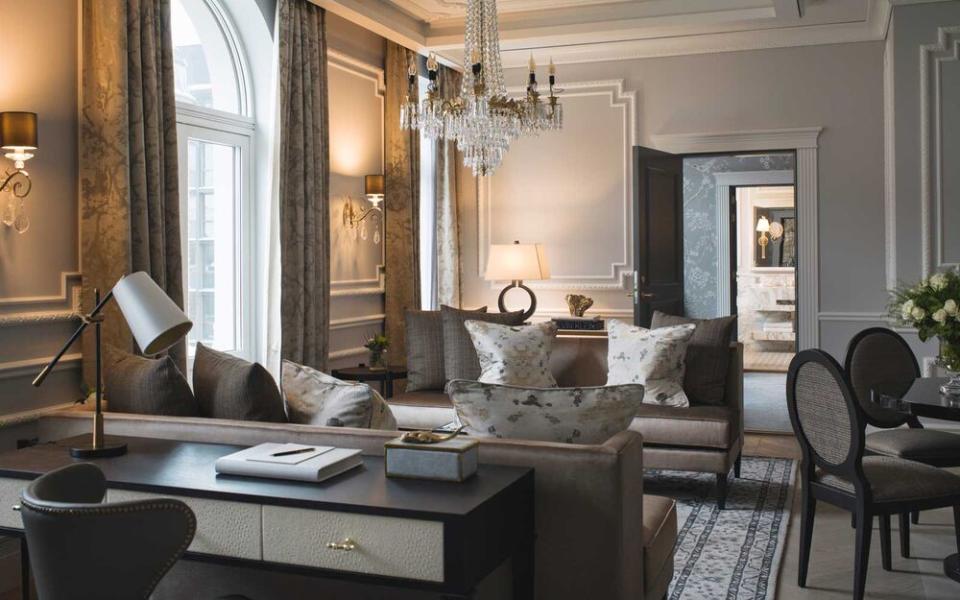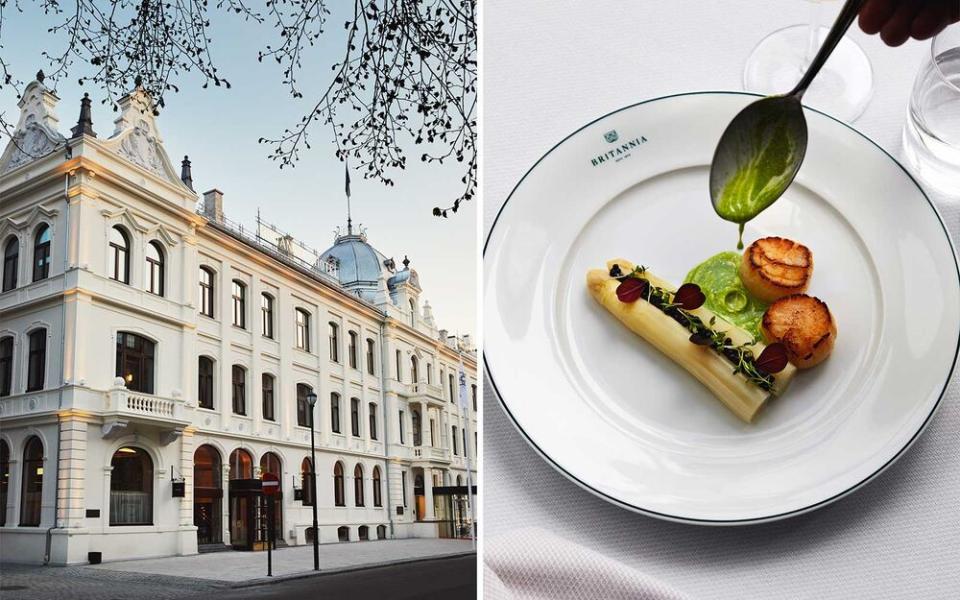How to Spend a Perfect Long Weekend in Trondheim, Norway

I arrived in the city of Trondheim just in time for the 17th of May — known to Norwegians as Nasjonaldagen, or National Day. Every year, the country celebrates the 1814 signing of its constitution by throwing a joyous street party. Men wear their best suits, while women and children dress in traditional folk costumes: sweeping blue capes and embroidered vests and skirts. Parents let their kids eat ice cream with abandon.
I may have been a little delirious from jet lag, but as I wandered through Trondheim, it was impossible not to get swept up by all the pomp-free pageantry and collective high spirits. I stopped to watch a morning procession of flag-waving schoolchildren and, later, a jolly, everyone's-welcome parade of marching bands, acrobats, and organized groups of local enthusiasts, from flamenco dancers to costumed Star Wars fans. "Hip, hip, hurrah," my fellow spectators shouted — the classic May 17 cheer. The old-fashioned phrase seemed to capture the sweetness of the holiday, and reminded me of the fact that, when I read surveys of the happiest countries in the world, Norway frequently appears near the top.
Lately Trondheim — a city of almost 200,000 residents located midway up the coast of this long, spoon-shaped nation — has a lot to be happy about. Last April, the Britannia Hotel, which has stood in the heart of town since 1870, reopened after a three-year, top-to-bottom renovation. Long thought of as a faded stalwart, it's now a fitting center of gravity for a city keen to advertise its charms to the outside world: a walkable, skyscraper-free downtown; a close-knit, unpretentious food scene that draws from Trondheim's proximity to both farmland and fjord; and an appealingly youthful vibe, thanks to the university, Norway's largest.

The Britannia Hotel was named after the English visitors who made up a large part of its early clientele, which included aristocratic anglers who flocked to Norway in the 19th century to fish its ample salmon supply. I stayed in a suite overlooking Dronningens Gate, the peaceful, immaculate street out front. (The area is nice enough for the Norwegian king, who stays at his 18th-century wooden palace on the next block when he's around.) A palette of grays and golds, an original 19th-century chandelier, chinoiserie wallpaper, and a deep brass tub combined to give my rooms a quiet splendor, and I slept soundly on the bed by Hästens, the Swedish brand beloved by mattress connoisseurs.
Speilsalen, the Britannia's primary restaurant, is lined with mirrors; tables for large groups are set in curtained metal enclosures that resemble giant birdcages. Head chef Christopher Davidsen, a Bocuse d'Or winner who hails from the city of Stavanger farther south on the coast, has created a seafood-centric tasting menu with 10 courses that arrive like gifts in a fairy tale, and are named for his memories of growing up by the ocean. Childhood Visits to My Grandmother at Hjelmeland is a miniature heart-shaped waffle topped with halibut, gooseberries, and nyr, a yogurty cream; a dish made with local langoustines is called Raging, Dark Seas on the Coast of Stadsbygd.
When I ate there, Speilsalen had only been open for six weeks, yet it operated with the polish of a restaurant that had been around for years. The hotel also has a French brasserie, a cocktail bar, a wine bar with a 10,000-bottle collection, and a subterranean cook-it-yourself Japanese grill. Breakfast is served in the Palmehaven, an expert conjuring of fin de siècle palm-court style; concierge Sten Stensrud, whose family owned the hotel for decades, learned to ride a bike in the room. "For me and my family, the reopening is the best thing that could have happened to the hotel," Stensrud told me. "It has made the Britannia relevant again."
You could spend a long weekend in Trondheim doing little more than staggering from one soul-satisfying meal to another. At To Rom og Kjøkken, which translates to "two rooms and a kitchen," I ate pillowy scallops, perfectly crisp pan-fried turbot in butter sauce, and the platonic ideal of mashed potatoes. At Bula Bistro, the vivacious young chef Reneé Fagerhøi served an amped-up version of the traditional May 17 brunch menu: sunshine-yellow eggs Benedict over plump asparagus; a soup packed with salmon, mussels, and pollack and drizzled with oil infused with spinach and leek; and a lemon-and-almond cake held together with thick slabs of buttercream.

On my last afternoon in Trondheim, I went for a run in an attempt to work off all this buttery goodness. I jogged a few blocks north to the waterfront, where cruise ships dock on their way up and down Norway's coast, and gazed out over Trondheim Fjord and the forested hills around it. Then I crossed the Nidelva — the river that forms an S as it flows through the city—and ran the cobblestoned streets of Bakklandet, an 18th-century neighborhood of low wooden houses and cheerful sidewalk cafés. From there I looked back across the water to the row of wharves in paint-box colors that make up Trondheim's most famous view.
Evening was approaching, and I was ready for another good meal. I sprinted up the hill that rises above Bakklandet, from where I could see Nidaros Cathedral, a kind of miniature Notre Dame. Then I doubled back down into Trondheim, crossing the red-painted bridge the locals call Lykkens Portal — the gate of happiness.
Taking in Trondheim — and Beyond
Getting There and Around
SAS and Norwegian have direct flights from Oslo to Trondheim that take a little less than an hour. No need to rent a car: Trondheim is a walker's delight.
It's a 10-minute walk from the Britannia Hotel to the waterfront, where you can view the gorgeous Trondheim Fjord. But the best way to see this 80-mile-long inlet is by getting out onto the water. In addition to sightseeing cruises along the Nidelva River, Trondheim by Boat offers 90-minute sunset tours of the fjord as well as fishing expeditions, with gear and lessons included. A 2½-hour car ride through spectacular scenery takes you to the islands at the mouth of the fjord. I visited small, idyllic Sula, which has a population of just 57. After a seafood lunch at the snug dockside Terna Brygge, a gentle hike led me to Sula Lighthouse, where I took in the panoramic views. For those who fantasize about a life of seaside solitude, the lighthouse has two simple guest rooms available to rent.
Tour Operator
Clare Watkins of Red Savannah can incorporate a few days in Trondheim into a tailor-made Norwegian or Scandinavian itinerary. A three-day stay in the city, including accommodation at the Britannia Hotel, is part of Red Savannah's 10-day Norwegian Culinary Adventure self-driving trip, which includes stops on the island of Stokkøya and the Inderøya peninsula.
A version of this story first appeared in the January 2020 issue of Travel + Leisure under the headline Three Cheers for Trondheim. Britannia Hotel provided support for the reporting of this story.

